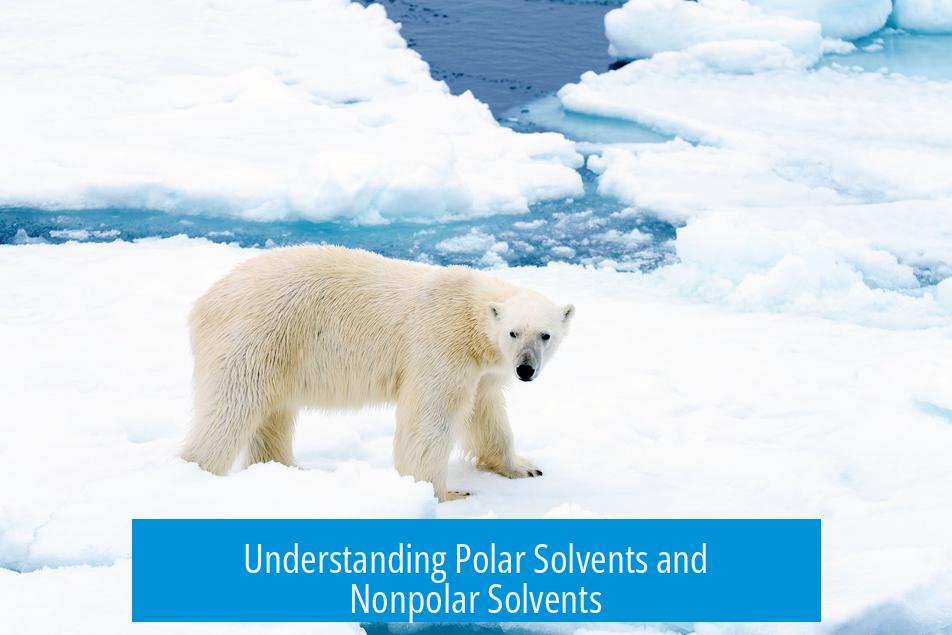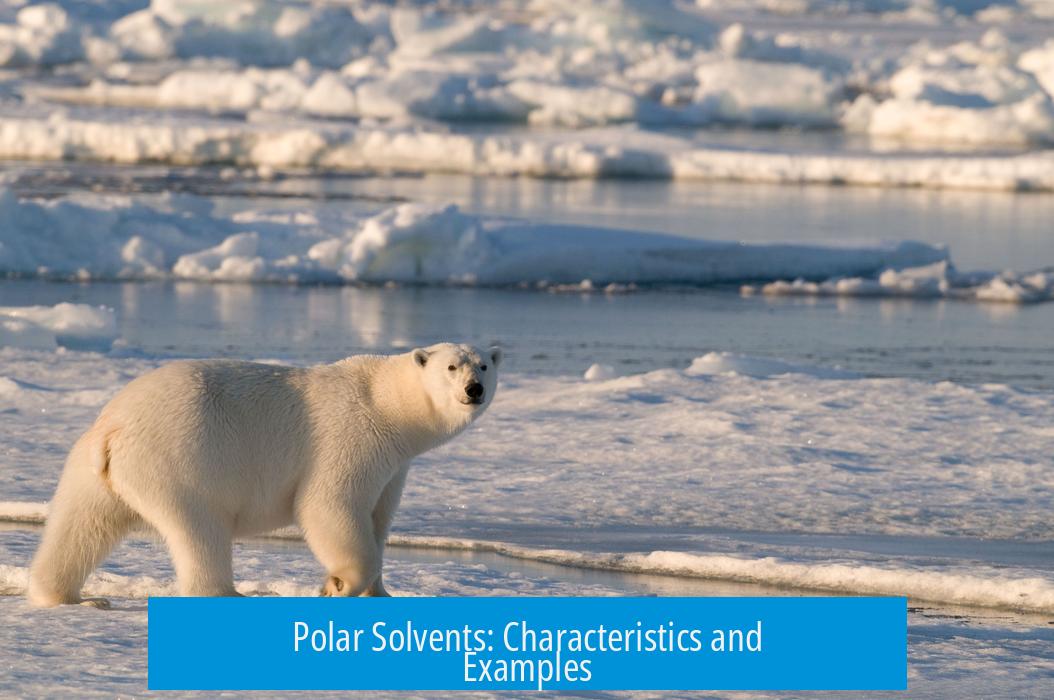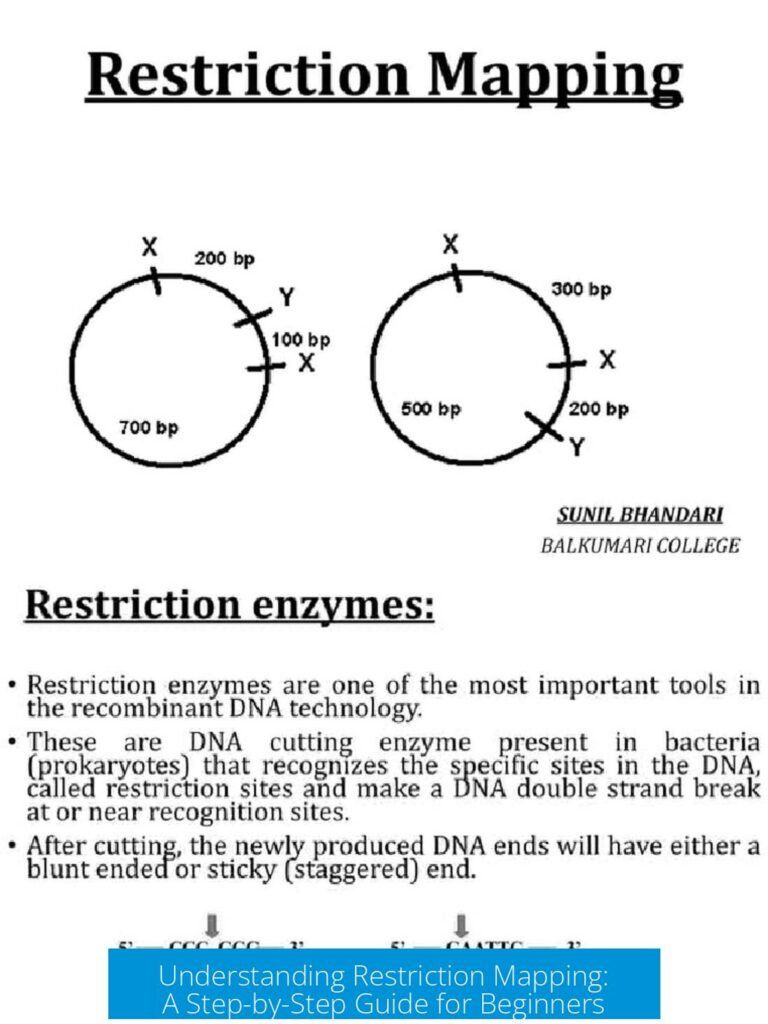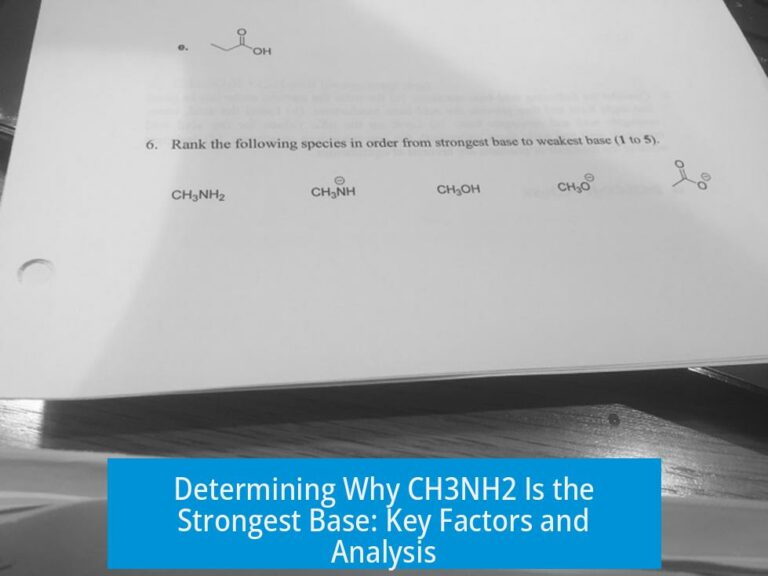Understanding Polar Solvents and Nonpolar Solvents

Polar solvents contain molecules with significant electric dipoles, promoting interactions through polarity and hydrogen bonding. Nonpolar solvents lack these features, having low polarity and minimal hydrogen bonding. This fundamental difference governs their solubility behaviors and uses in chemistry.
Hansen Solubility Parameters (HSP) Framework

The Hansen Solubility Parameters system breaks solvent characteristics into three components:
- Dispersion forces (δd)
- Polar interactions (δp)
- Hydrogen bonding (δh)
These values form coordinates in a three-dimensional space. This approach quantifies solvent similarity, explaining like dissolves like. The closer two solvents or materials are in this space, the more likely they will dissolve in one another.
Polar Solvents: Characteristics and Examples

Polar solvents possess high polarity and often form hydrogen bonds. Water is a classic example with a dielectric constant of about 80.
However, solvents like N-Methylformamide exhibit even greater polarity with dielectric constants near 160. Hexafluoroisopropanol forms stronger hydrogen bonds than water, increasing its polarity effects.
Additionally, ionic liquids, such as ethylammonium nitrate, act as polar solvents. These liquids remain stable at room temperature and exhibit strong ionic and hydrogen-bonding interactions, expanding the range of polar solvents.
Nonpolar Solvents Explained

Nonpolar solvents show low values for polar and hydrogen bonding parameters in the Hansen model. This means their solubility spheres lie far from polar solvents in the HSP space.
Examples include hexane, toluene, and other hydrocarbons, which lack significant dipole moments and hydrogen bonding capability. These solvents dissolve nonpolar compounds effectively but do not mix well with polar substances.
Practical Importance of Solvent Polarity

Understanding solvent polarity via HSP allows chemists to tailor solvents for specific needs. It aids in developing solvent mixtures for:
- Crystallization processes
- Dissolving polymers
- Reducing reliance on chlorinated solvents for greener chemistry
- Predicting and optimizing formulations
This knowledge improves efficiency and environmental impact in chemical manufacturing and research.
Key Takeaways

- Polar solvents have significant dipoles and hydrogen bonding, nonpolar solvents do not.
- Hansen Solubility Parameters describe solvent polarity with three values for dispersion, polarity, and hydrogen bonding.
- Some solvents, like N-Methylformamide, are more polar than water.
- Ionic liquids expand the range of polar solvents with stable ionic interactions.
- Nonpolar solvents excel at dissolving nonpolar compounds due to low polarity and hydrogen bonding.
- Solvent polarity understanding aids in creating custom solvent systems for industrial and laboratory use.
The Colorful World of Polar Solvents and Nonpolar Solvents: Why It Matters More Than You Think
Ever wonder why oil and water don’t mix? Or why some substances dissolve perfectly in certain liquids but stubbornly refuse in others? This all boils down to the fascinating universe of polar solvents and nonpolar solvents. Today, we’re diving deep into what sets these solvent types apart, sprinkled with some serious chemistry wisdom and practical tips along the way.
In the simplest terms: Polar solvents have molecules with an uneven distribution of charges, making one side slightly positive and the other negative. Meanwhile, nonpolar solvents have molecules where the charges are more balanced, with no distinct poles. This fundamental difference governs everything from how substances dissolve to how materials interact.
Hansen Solubility Parameters (HSP): Decoding the Solvent Puzzle
Before you think this is all just theoretical mumbo jumbo, here’s where the magic happens—Hansen Solubility Parameters. Imagine a 3D map, but instead of cities, you plot solvents based on three coordinates: dispersion forces, polarity, and hydrogen bonding. This system doesn’t just say “like dissolves like” – it quantifies it. Want to know how close two solvents are in behavior? Plot their points and see if their ‘solubility spheres’ overlap.
This isn’t just geeky fun. It’s immensely practical. Chemists use it to pick the perfect solvent combo—say, for dissolving tricky polymers or creating safer, greener solvents. It’s like dating apps, but for chemicals. Swipe right on compatible solvents without the heartbreak of failed experiments.
Polar Solvents: More than Just Water
Most people immediately think of water when you mention polar solvents. And yes, water is quite polar. But, hold onto your lab coats—there are solvents out there with even higher polarity. Take N-Methylformamide, for example. Its dielectric constant is a staggering 160 compared to water’s 80. That’s like water’s cooler, more intense cousin.
Then there’s hexafluoroisopropanol, which takes hydrogen bonding to another level, making even water blush in comparison. These high polarity numbers mean these solvents attract and hold onto polar substances like nobody’s business.
And if you thought that was it, think again. Enter ionic liquids—salts that stay liquid at room temperature. Ethylammonium nitrate is one such example. These ionic solvents behave like polar solvents and are revolutionizing green chemistry by replacing volatile organic solvents. They’re stable, reusable, and scream sustainability.
Nonpolar Solvents: The Chill, Balanced Chemistry Crowd
If polar solvents are the drama queens, nonpolar solvents are the calm, balanced friends at the party. They have low polarity and little to no hydrogen bonding capability. Picture solvents like hexane or benzene (classic examples, though they weren’t given explicitly above). They dissolve nonpolar substances like oils, fats, and some polymers effortlessly.
This difference is crucial. When you’re dealing with a nonpolar polymer, reaching for a polar solvent is like trying to mix oil and water—it just won’t happen. Thanks to the Hansen parameters, you can predict which solvent fits the bill without trial and error.
Why Does Understanding This Matter? Practical Magic in the Lab and Beyond
So you’re armed with knowledge about polar and nonpolar solvents. Now what?
- Say you’re developing a solvent system for growing high-quality crystals. Fine-tuning the solvent polarity can mean the difference between a perfect gem and a cloudy mess.
- If you work in polymer chemistry, matching the solvent polarity to the polymer can result in smoother dissolutions and better processing results.
- Want to avoid harsh, chlorinated solvents? Using HSP insights lets you create safer, greener solvent mixtures without sacrificing performance.
- Even in product formulation—think paints, cosmetics, or pharmaceuticals—understanding these parameters helps predict how ingredients mix and behave.
Here’s a little insider tip: sometimes, mixing a polar and a nonpolar solvent can create a system with bespoke solubility properties, perfect for niche problems. It’s the Swiss Army knife approach to chemistry.
Let’s Talk Examples and Experience
In a recent project, a research team tried to dissolve a new polymer with unknown solubility behavior. Using HSP, they found the polymer fell nearest to solvents high in polarity and hydrogen bonding. Instead of blindly testing dozens of solvents, they quickly zeroed in on solvents like N-Methylformamide and hexafluoroisopropanol—both polar heavyweights—and solved the problem efficiently.
Imagine the time, effort, and chemical waste saved! That’s the beauty of science backed by solid parameters rather than guesswork.
Final Thoughts: Are You Team Polar or Team Nonpolar?
Choosing between polar and nonpolar solvents isn’t just a science question; it’s a real-world problem solver. Whether you’re a chemist, engineer, or hobbyist, grasping these solvents’ characteristics enriches your toolkit.
Polar solvents like N-Methylformamide, hexafluoroisopropanol, and ionic liquids deliver powerful, targeted dissolving strength for polar compounds. In contrast, nonpolar solvents shine where fat and oil-based substances need taming.
Next time you tackle a tricky mixture or formulation, pause and ask: “Is the solvent I’m choosing on the right side of the polarity fence?” Your experiments and formulations will thank you.
If you want to dig further, exploring Hansen parameters brings a scientific crystal ball to your work. It’s the secret sauce behind mastering solubility and moving from chaotic mixes to predictable, elegant solutions.
What makes a solvent polar according to Hansen Solubility Parameters?
Polar solvents have high values for the polar and hydrogen-bonding coordinates in Hansen Solubility Parameters. These values indicate strong dipole interactions and hydrogen bonding capabilities within a 3-dimensional solubility space.
Are there solvents more polar than water?
Yes. For example, *N*-Methylformamide has a dielectric constant around 160, which is double that of water. Hexafluoroisopropanol also forms stronger hydrogen bonds compared to water.
How do ionic liquids fit into the polar solvent category?
Ionic liquids, such as ethylammonium nitrate, are considered polar due to their ionic nature. Many remain liquid at room temperature and have strong polar interactions, making them effective polar solvents.
What defines a nonpolar solvent in terms of Hansen Solubility Parameters?
Nonpolar solvents have low values in the polarity and hydrogen-bonding dimensions of the Hansen space. They mainly exhibit dispersion forces and lack strong dipole or hydrogen bonding.
How is understanding solvent polarity useful in practical applications?
Knowing solvent polarity helps tailor solvent systems for tasks like crystal growth, polymer dissolution, and creating greener processes. It allows precise formulation by predicting solubility and interaction behavior.





Leave a Comment